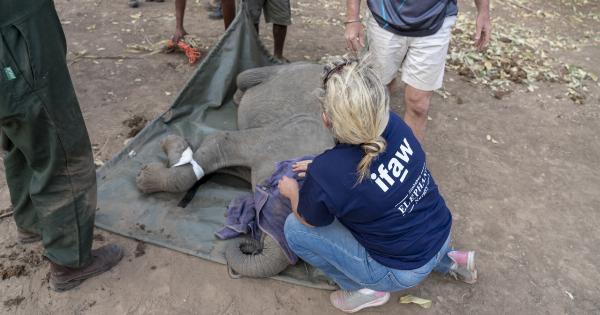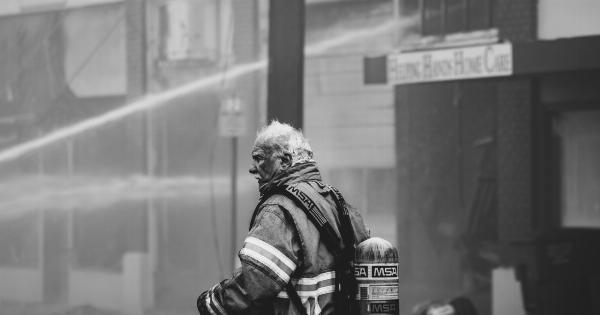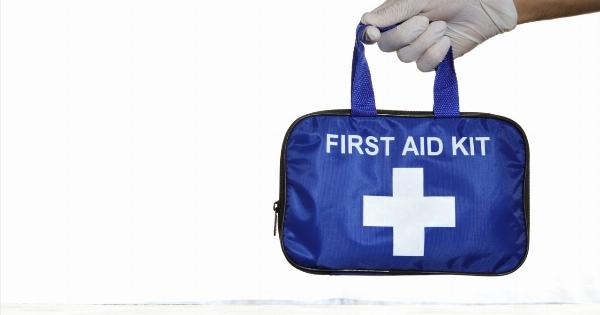In times of emergencies, whether it is a natural disaster or a public health crisis, it is crucial for governments and communities to come together and respond swiftly and effectively.
An extraordinary response is needed to mitigate the impact of the emergency, save lives, and provide support to those affected. In this article, we will explore what constitutes an extraordinary response to emergencies and how different entities can work together to tackle these challenging situations.
The Importance of Preparedness
One of the key elements of an extraordinary response to emergencies is preparedness. Governments, organizations, and individuals must have plans in place to anticipate and handle various kinds of emergencies.
This includes having robust emergency management systems, well-trained personnel, and adequate resources to respond quickly when disasters strike.
Coordination and Collaboration
In order to mount an effective emergency response, coordination and collaboration among different stakeholders are essential.
Government agencies, non-governmental organizations, businesses, and community groups must work together seamlessly to ensure a cohesive and efficient response. This involves sharing information, coordinating efforts, and pooling resources to address the emergency swiftly and effectively.
Early Warning Systems
An extraordinary response to emergencies necessitates the presence of reliable early warning systems.
These systems can provide timely alerts and critical information to communities and relevant authorities, enabling them to take quick action and minimize the impact of disasters. Investing in advanced technology and infrastructure for early warning systems is crucial for ensuring a proactive approach to emergencies.
Effective Communication
Clear and effective communication is paramount during emergencies. It is essential for authorities to disseminate accurate information to the public, providing guidance on safety measures, evacuation procedures, and available resources.
Likewise, feedback and information from affected communities should be collected and considered when deciding the course of action. Ensuring that communication channels are open and accessible to all is vital for a successful emergency response.
Rapid Deployment of Resources
During emergencies, time is of the essence. An extraordinary response requires the rapid deployment of resources, including personnel, medical supplies, food, shelter, and other essentials.
Governments must have efficient logistics systems in place to quickly mobilize and allocate resources to where they are most needed. Collaboration with international organizations and neighboring countries can also play a crucial role in providing additional support and resources during large-scale emergencies.
Supportive Policies and Legislation
The presence of supportive policies and legislation is crucial in facilitating an extraordinary response to emergencies.
Governments must have frameworks that enable them to take swift action, mobilize resources, and implement emergency measures effectively. These policies should also protect the rights and well-being of affected individuals and communities, ensuring that vulnerable groups receive the necessary support and assistance.
Investment in Resilience
Building resilience is an integral part of an extraordinary response to emergencies. Governments and communities should invest in measures that reduce vulnerability and enhance preparedness for future disasters.
This can include infrastructure improvements, disaster risk reduction initiatives, and community training programs. By investing in resilience, societies can better withstand and recover from emergencies, ultimately minimizing their impact.
Empowering Local Communities
Empowering local communities is fundamental to an extraordinary emergency response. Communities should be actively involved in planning, decision-making, and implementation processes.
Local knowledge and expertise can be invaluable in developing effective response strategies and ensuring that interventions are culturally and contextually appropriate. When communities are empowered, they become more resilient and capable of protecting themselves during emergencies.
Learning from Past Experiences
An extraordinary response to emergencies requires a continuous learning process. Governments and organizations should analyze past emergency responses, identifying strengths, weaknesses, and areas for improvement.
Lessons learned from past experiences can inform future preparedness and response efforts, leading to more effective and efficient emergency management systems.
Conclusion
Responding to emergencies is a challenging task that requires an extraordinary response. From preparedness and coordination to rapid deployment of resources and investment in resilience, multiple elements contribute to an effective emergency response.
By continuously learning from past experiences and empowering local communities, governments and organizations can better protect their populations during times of crisis. An extraordinary response demands collaboration, innovation, and a commitment to saving lives and rebuilding communities.




























